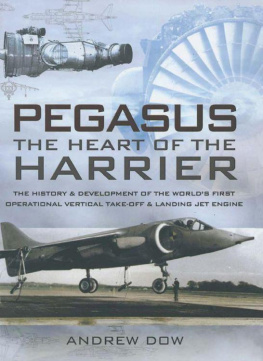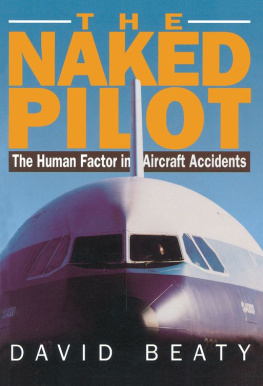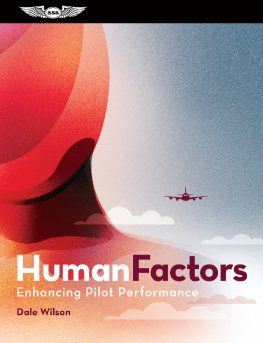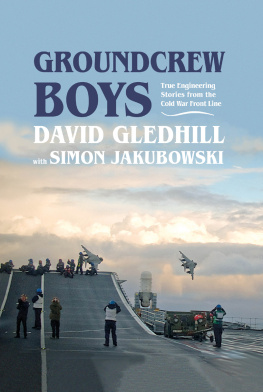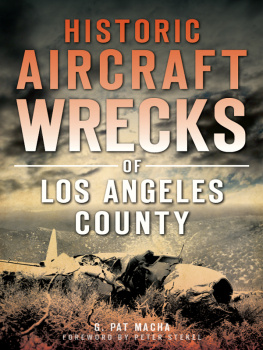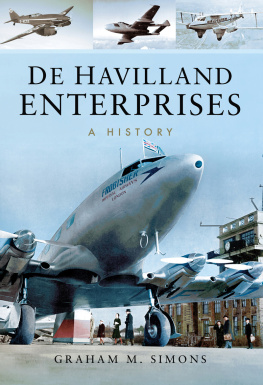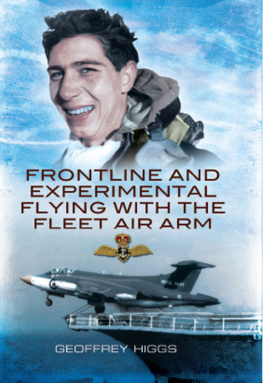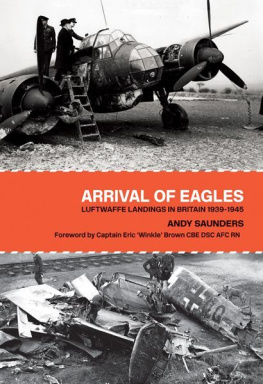Many of the photographs in this book came from the West Midland Aviation Archive, at the Boulton Paul Aircraft Heritage Project. Others to whom I owe thanks are Wing Commander Eric Barwell, Jim Boulton, A/E Ben Gunn, Alex Henshaw, Fred Owen, Group Captain Edwin Shipley, Jenny Woodall, and last but certainly not least Wendy Matthiason.
Introduction
What goes up must come down has been a basic concern of aviators since aviation began; specifically returning to earth in the same condition as they went aloft, and hopefully in a place of their own choosing. Although it is often said that a good landing is one you can walk away from, most aviators aim for something better than that.
Terminology comes into play in the difference between a forced landing and a crash-landing. The former suggests an unplanned descent without damage necessarily resulting. The latter suggests damage but not necessarily away from the place you first intended. A crash simply suggests both damage and a lack of intent on the part of the pilot.
The episodes chosen in this book on the whole describe forced landings in out-of-the-way places, usually with damage resulting. In every case the pilot and crew survived the forced landing, and awaited their rescue. In most of the events described, rescue eventually came, sometimes after a very long period of time. Occasionally, rescue was not a problem, despite the unusual location of the forced landing; mostly it involved a long wait, or strenuous efforts by the crew themselves. In a couple of the episodes chosen, rescue never came.
When any pilot experiences a sudden loud bang, or total silence, they are often faced with the stark choice of taking to their parachute, or trying to get their aircraft down in as few pieces as possible. Usually, only military pilots or test pilots have the luxury of the parachute option. Some of the chapters in the book describe the careers of pilots who, faced with this option, have at different times made different choices. Civilian pilots usually have to resort to prayer and holding back a rising flood of panic, as they scan the ground for likely options, and work out how much they are still in control.
Flying is often described as 99 per cent boredom, and 1 per cent blind panic. These are the stories of some of those 1 per cents.
CHAPTER 1
Down in the Irish Sea
Even those with a limited knowledge of aviation history know that Louis Blriot was the first to fly the English Channel, or that Commander Read in his NC-4 flying boat was the first to fly the Atlantic, but who first flew the Irish Sea is less well known. This is probably because the question has three answers, all of them correct well it is the Irish Sea. The man most commonly acknowledged to have first flown the Irish Sea is Robert Loraine. In fact, he never made it. He force-landed in the sea and had to swim the last part of the way to Ireland! Not only that, before he had even reached the taking off point, he force-landed in one of the remotest areas of Wales.
Robert Loraine was famous even before his flying exploits, being one of the best known actors of his day. He had been a soldier in the Boer War, and was interested in flying from its earliest days. He had watched Henri Farman flying at Issy-les-Moulineaux, and when Louis Blriot climbed into his monoplane to fly the Channel for the first time, it was Loraine to whom he handed the crutches he was using at the time. Blriots achievement inspired Loraine to to to the Blriot School to learn to fly. However, his impetuous nature caused too many crashes, and it was at the Farman School at Mourmelons where he earned his Aviators Certificate on 21 June 1910.
Unwilling to wait for delivery of a new Farman biplane, he offered Farman the huge sum of 7000 for one that had already been sold but was awaiting collection. He was able to pay so much because he had recently earned 40,000 for a production of George Bernard Shaws Man and Superman . He engaged Jules Vedrines as his mechanic, a small acerbic Frenchman who was later to become a famous aviator in his own right.
He transported his new Farman to an airfield that had just been built at Beaulieu in the New Forest. His practice flights from there usually ended in crash-landings, but Vedrines patiently repaired the aircraft each time. The Bournemouth Flying Meeting was due to start on 11 July, following hard on the first of the year held at Dunstall Park, Wolverhampton. Loraine wished to make a good impression by flying to the Meeting, whereas all the other competitors were transporting their aircraft down from the Midlands by rail. Unfortunately, Loraine crashed his Farman on the way to Bournemouth and it arrived as a pile of wreckage in six farm carts!
Vedrines worked his magic once more, and the Farman was ready in time for Loraine to make the most meritorious flight of the Meeting, when he flew to the Isle of Wight in the midst of a thunderstorm. He was flying under the pseudonym Robert Jones, as he did not wish his flying to be seen as a publicity stunt. The Press were soon to discover the truth, but he persisted with the ruse, though it brought him more publicity than if he had used his own name. He even insisted in signing autographs as Jones, whenever he adopted the role of aviator.
The Bournemouth Flying Meeting finished under a cloud when the Wright biplane of Charles Rolls broke up in the air and he was killed. The next Meeting was to be held at Blackpool, and Loraine, Vedrines, and his newly appointed manager, George Smart, headed North. After a long delay when the railway lost the Farman, finally found by Smart in a siding 7 miles from Blackpool, Loraine once more made the most impressive flight of the Meeting. On 1 August he flew south over Liverpool and New Brighton, but was forced down with engine trouble at St Annes on Sea on the way back, continuing after repairs. He was much aggrieved to discover that he had not won the prize for the longest duration in the air, because the whole of the time when he was out of sight of the airfield did not count!
It was in the immediate aftermath of this flight that Loraine hatched his plan to be the first to fly the Irish Sea. On 10 August he took off and headed for Anglesey in beautiful weather. The Farman had been rigged incorrectly and he was forced to push the elevator lever fully forward to keep it flying level. After an hour and a half in the air he saw the Great Ormes Head and a golf course below. He landed successfully, avoiding all the bunkers, a skill he had not attained when holding a golf club rather than a control column. He then waited for Vedrines to arrive and re-rig the aircraft. While he waited he signed autographs as Robert Jones in the clubhouse.


